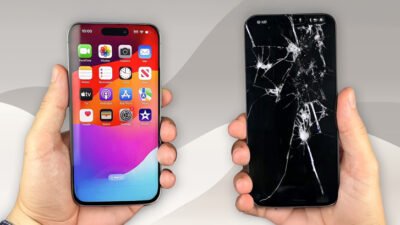RFID has already proved itself. It tracks warehouse inventory, keeps hospital equipment accounted for, and speeds up manufacturing lines. Yet businesses are asking for more. They want faster reads, richer data, and more intelligent systems. The next phase is about new types of RFID tags and systems that do more than identify an item.
Why the Basics Still Matter
Before diving into what’s new, it’s worth revisiting the foundation.
Traditional RFID falls into a few groups: passive, battery-assisted (often called semi-passive), and active. Tags also run on low, high, or ultra-high frequencies and come in various shapes, from rugged plastic housings to paper-thin labels.
These categories remain critical. A passive UHF tag might be perfect for retail shelves but unreliable in a cold-storage warehouse. Knowing the trade-offs, range, cost, and durability keeps a project from failing before it starts. The future builds on these fundamentals; it doesn’t erase them.
What’s Arriving Next
The developments are starting to reshape what “type of RFID” can mean.
-
Printed and Chipless Tags
Picture a tag that looks like ordinary ink on a package. Conductive printing now makes that possible. These tags are thin, flexible, and inexpensive. They won’t handle complex data yet, but the cost advantage is huge for disposable packaging or short-lived products. Grocery chains and apparel brands are watching this space closely.
-
Smart Tags with Built-In Sensors
Tags can now measure temperature, humidity, or movement. A produce distributor can tell if a shipment stayed cold from farm to store. A hospital can see if a critical instrument has suffered a drop. Its identification plus condition monitoring in a single label helps reduce waste and prevent recalls.
-
Battery-Assisted Hybrids
Hybrid tags live between passive and active. They usually behave like a passive tag but draw on a small battery when a more extended read range or sensor power is needed. It’s a practical middle ground, ideal for large warehouses or open yards where fixed readers need extra reach.
-
Energy-Harvesting Designs
Some tags generate power from ambient light, vibration, or radio waves. No batteries to replace and more extended deployments in hard-to-reach spots make these appealing for remote assets such as outdoor equipment or utility meters.
-
RFID Meets IoT and Edge Computing
The real leap often happens beyond the tag itself. Readers can now feed data to small edge devices that analyze it immediately. A sudden temperature spike can trigger an alert before a product spoils. AI tools can sift through thousands of reads and highlight unusual patterns, giving managers insight without manual checks.
-
Blended Tracking Systems
Many companies pair RFID with technologies like Ultra-Wideband or Bluetooth Low Energy for pinpoint accuracy. RFID provides broad coverage, while the partner technology delivers precise location. The mix creates a stronger overall system that adapts to different environments.
Reality Checks
Cutting-edge ideas are exciting, but practical issues remain.
- Cost vs. Return – Sensor tags and hybrids cost more. Make sure the benefits justify the investment.
- Environment – Metal racks, liquids, and heavy interference can affect even the newest designs.
- Power Management – Advanced functions need energy. Batteries or harvesting methods must be planned carefully.
- Standards – Some innovations are still proprietary. Compatibility with existing infrastructure is key.
- Scaling Up – A pilot might look flawless. Rolling out thousands of items takes more planning and testing.
How Lowry Solutions Helps
Lowry Solutions specializes in designing and deploying RFID systems for manufacturing, healthcare, and logistics industries.
When a company wants to explore new tag types, sensor tags for cold-chain monitoring, or flexible labels for packaging, Lowry starts with a feasibility study. They run real-world pilots, refine the approach, and create a phased rollout plan.
Their integration team connects advanced tags and readers to existing ERP or supply-chain platforms so data flows smoothly. The result is a future-ready system built on proven practices. Lowry’s engineers also train staff on equipment use and data management, helping internal teams maintain performance after deployment.
What to Watch Next
- Smart tag costs will keep falling as materials and printing methods improve.
- Industry standards will catch up to new sensor and hybrid technologies.
- Edge devices will grow more capable, making instant analytics routine.
- Tracking networks will blend RFID with other location technologies for seamless coverage.
- Software tools for analytics and reporting will evolve alongside the hardware, giving decision-makers richer dashboards and predictive insights.
Companies are now preparing by upgrading infrastructure and testing new ideas, and they will be ready when these advances become everyday tools.
Final Takeaway
The next generation of RFID isn’t about more of the same. It’s about smarter types of RFID that can sense, react, and connect to larger data networks.
You don’t need to gamble on untested tech to keep pace. Start small, pilot new tags. Build on what already works.
Lowry Solutions can guide you through each step, from early evaluation to full integration. With the right partner and a practical plan, the future of RFID can start today.




